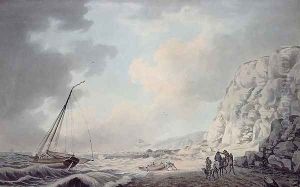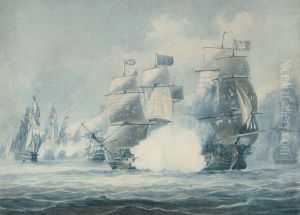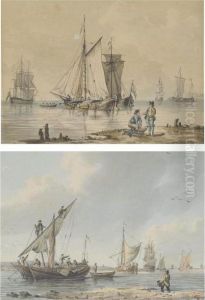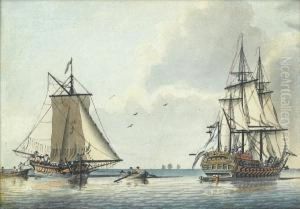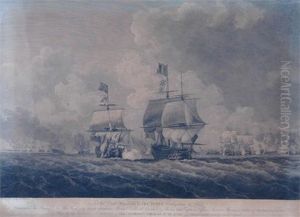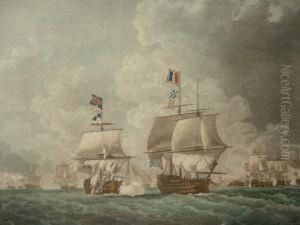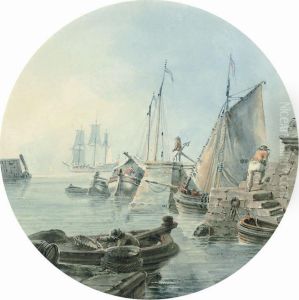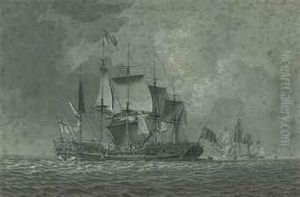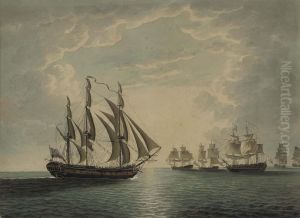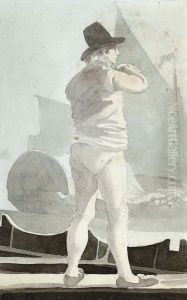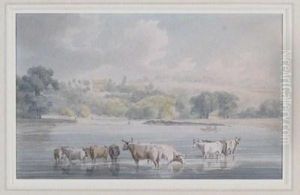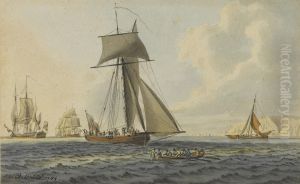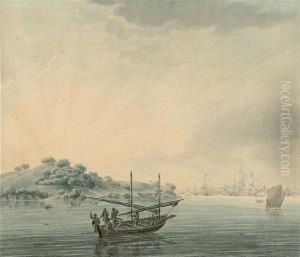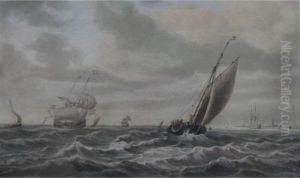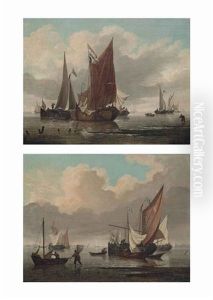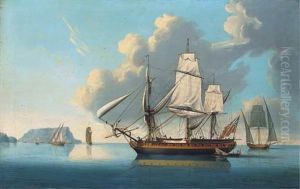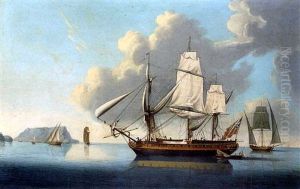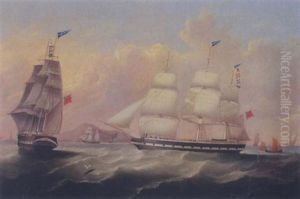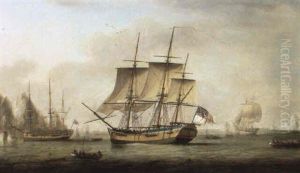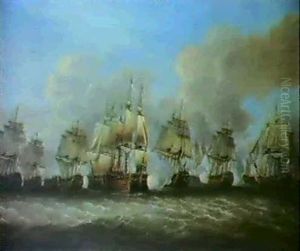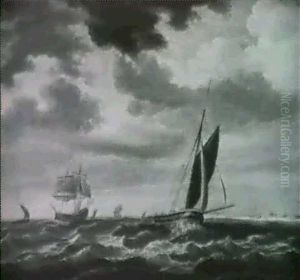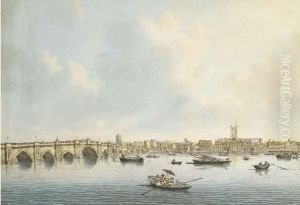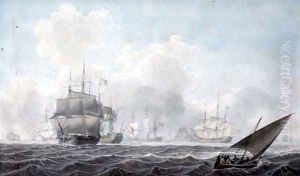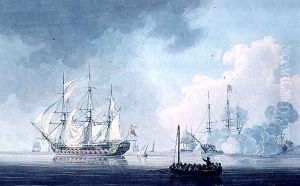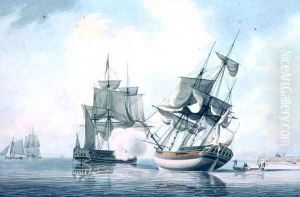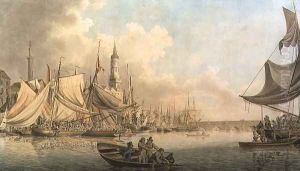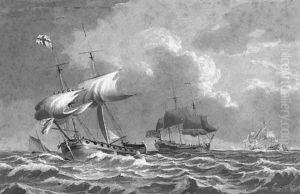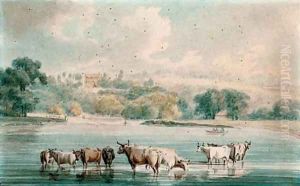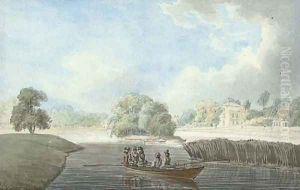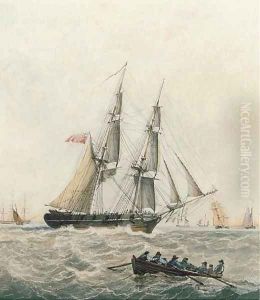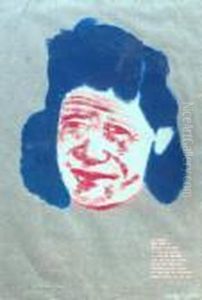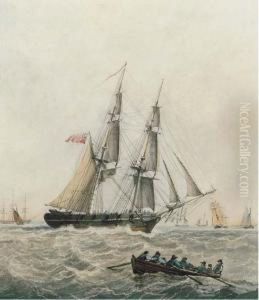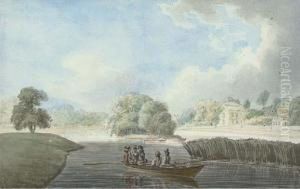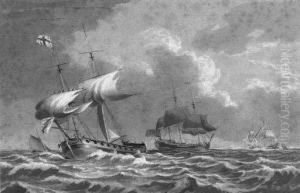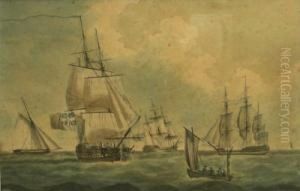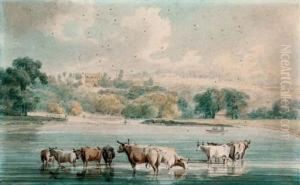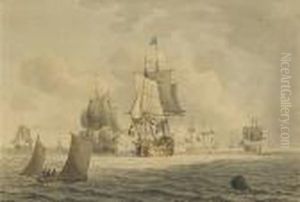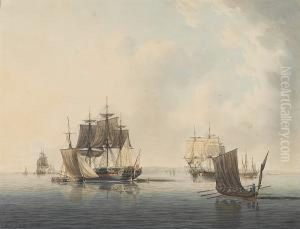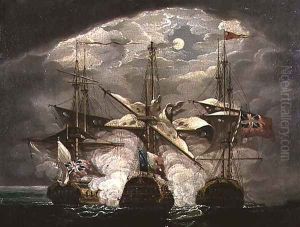Robert Cleveley Paintings
Robert Cleveley was an English marine artist whose work depicted a variety of seascapes and naval battles from the late 18th century. He was born in 1747 in Deptford, London, which at the time was a significant center for dockyards and maritime activities. His father was a shipwright, and both he and his twin brother, John Cleveley the Younger, were heavily influenced by their maritime surroundings, leading them to pursue careers related to the sea.
Robert Cleveley initially followed in his father's footsteps and worked at the Royal Dockyard in Deptford. His early exposure to ships and the sea undoubtedly influenced his later work as an artist. Unlike his brother John, who also became an artist, Robert did not receive a formal education in art. Instead, he learned his drawing and painting skills through practice and observation.
During his career, Cleveley traveled extensively, which provided him with ample material for his paintings. He served as a marine draughtsman on a voyage to the Pacific in the late 1770s, which gave him the opportunity to document naval scenes and ship portraits firsthand. This experience was crucial in developing his authentic and detailed representation of maritime life.
Cleveley's work is characterized by its attention to the technical details of ships and the atmospheric conditions of the sea. His paintings often depict naval engagements, merchantmen, and other vessels, capturing the drama and action of life at sea. He became known for his ability to convey the movement of water and the play of light on its surface, which added a vivid realism to his seascapes.
The artist's legacy is a collection of works that serve as historical records of the naval history of his time. Robert Cleveley's paintings are valuable not only for their artistic merit but also for their documentary importance, providing insights into the maritime practices and naval engagements of the 18th century.
Cleveley continued to work and exhibit his art throughout his life. He died in 1809, leaving behind a body of work that continues to be appreciated for its contribution to marine art and its reflection of the naval history during a period of significant maritime exploration and conflict.
